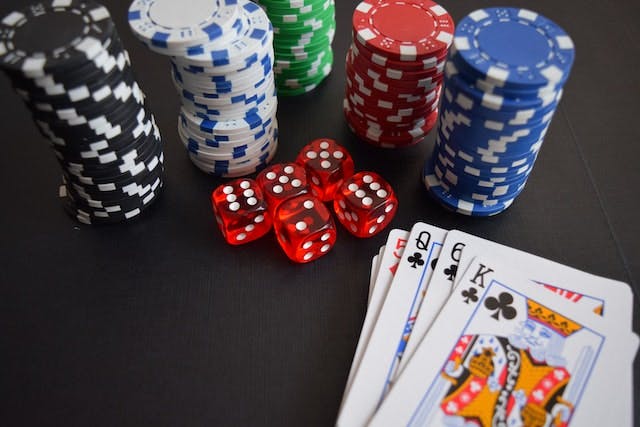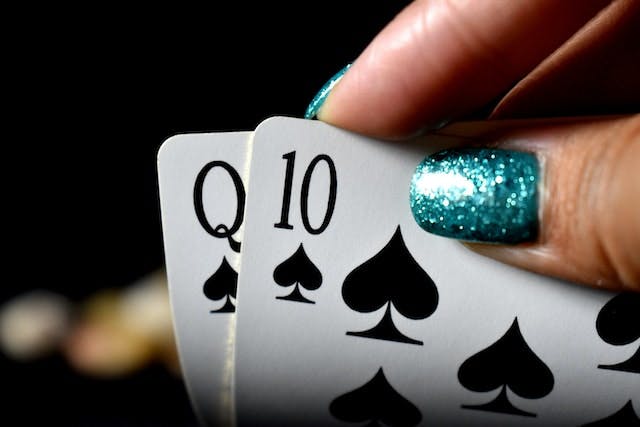How To Play Poker
Here you will find everything you need to know about how to play online poker.
How to Play Poker: Poker Hands and Rules for Beginners
Poker is one of the most popular card games globally. It also represents the best of casino gambling for many individuals. However, if you're new to Poker, you may find a table full of cards and chips a bit confusing.
What do all the colorful cards with distinctive numbers and letters mean, and how can you use them to walk away with a pocket full of cash on your first casino trip? If you're asking yourself these questions, we've got the answers in this detailed beginner Poker guide.
Read to the end!

Basics of Poker: The 52-card Deck
Poker games have traditionally featured one deck of 52 cards, with one or two jokers added to the card collection in some cases. However, casinos and clubs now feature two card decks with contrasting colors to make the game faster.
During poker games utilizing two-card packs, players are dealt the current deck, while the previous dealer combines cards from the last deck, shuffles them, and places them on his left-hand side. Immediately players round-up with the current deal, the next dealer receives the shuffled pack for the new deal.
Poker games that use two packs of cards also require the players on the dealer's left hand to cut the pack instead of the traditional right-handed opponent.

Poker Hands
Poker has numerous formats. However, understanding the basic hands can help you play any type of poker easily. Typically, Poker features five hands ranked from best (five of a kind or Royal Flush) to worse (no pair or High Card).
However, the rules for low-ball poker games, such as deuce-to-seven triple draw, flip the hand value, with the High Card being the best possible hand and the Royal Flush being the worst.
That said, here are the standard poker hands ranked from top to bottom:
- Royal Flush: The best poker hand and also quite rare, with cards bearing 10-J-Q-K-A.
- Straight Flush: Also a relatively rare hand, with a sequence of numbered or lettered cards from the same suit, such as 6-7-8-9-10.
- Four of a Kind: Four cards with similar values alongside a fifth side card, such as A-A-A-A-K
- Full House: Three cards with similar values next to a pair of related cards. For example, A-A-A-J-J.
- Flush: Cards from the same suit, regardless of numerical or lettered values.
- Straight: Cards with consecutive values, regardless of their suit, such as 6-7-8-9-10
- Three of a Kind: Three cards of similar values paired with two cards of differing values, such as A-A-A-K-J.
- Two Pair: Two pairs of cards with similar values alongside an extra card. For instance, A-A-5-5-K.
- Pair: One pair of similar valued cards and three extra cards, such as K-K-A-J-7.
- No Pair/High Cards: Five cards that fail to produce any of the above hands, such as A-K-Q-9-7.
Basic Poker Rules
The following are basic Poker rules to note:
- All Poker variations require you to have the strongest hand (or at least, convince the other players you do) to win the game.
- During each round, you can place bets, check, call or raise current bets, or fold to withdraw from the hand when it's your turn to play.
- Players at the end of a betting round reveal their cards in a "showdown" to determine the winner. The winner is the player with the strongest five-card hand.
- If everyone folds after you bet, then you win without a showdown. Expert players often bluff to convince everyone else at the table that they have the best hand (even if they don't) to make them fold.
Types of Poker Bets
Betting in poker occurs in rounds. During each round, you can:
- Check: Before the first bet in each round, you can decline an opportunity to bet till later in the round when it's your turn.
- Open: The first bet in each poker round.
- Call: A bet made to match the highest bet in a round.
- Raise: Increase the previous highest bet. Players can also re-raise.
- Fold: Withdraw from the hand and lose any bets in the pot.
- All-in: If you don't have enough chips to call or raise a bet, you can go all-in with your leftover chips.
Poker often requires players to say their betting actions loudly to the hearing of everyone at the table. However, you can also use non-verbal cues to communicate your bets.
For example, you could tap the table to check or slide your cards face-down to the dealer to indicate a fold. Furthermore, slide your chips forward to the dealer whenever you raise or call to define the amount.
Blinds and Antes
Popular Poker alternatives such as Texas Hold'em and Omaha Hi typically feature small and big blind bets that players must make before a dealer hands each player their cards for the first betting round. Stud poker games also feature ante bets that precede the first dealing and betting rounds.
In games requiring blind bets, the small blind is usually half the big blind's price. You'll often find the prices for these bets on the game's listings. Also, several Poker titles feature minimum bets for each round, equalling the big blind.
Poker Betting Rounds
- Round 1: Card Shuffling and Dealing: A Poker game begins with the dealer shuffling the card deck and dealing two cards to each player. However, in Texas Hold'em, the player on the dealer's left-hand side bets the small blind, while the opponent on the small blind's left-hand side bets the big blind. The dealer starts shuffling and dealing after these bets.
- Round 2: The Pre-Flop: Betting begins after players have received their cards. They can either check, call, raise or fold. These actions are called the Pre-Flop in Poker gaming.
- Round 3: The Flop: Here, the dealer places three community cards on the Poker table. Bettors can combine these cards with their two-card hand to form their best hand. After dealing with the community cards, betting begins with the small blind player. If they've folded, the player left of the small blind kicks off betting.
- Round 4: The Turn: The Turn denotes a dealer adding another community card to the table. Afterward, players can commence a new betting round.
- Round 5: The River: The River is the final Poker betting round. The dealer also adds a fifth community card, and players decide if they've got a strong hand to continue till the showdown or fold. During the showdown, all players reveal their cards, and the individual with the best hand wins.
Poker Etiquettes
Poker has a code of conduct players must obey, even if they're not specifically stated.
Some essential poker etiquettes include:
- Don't play or bet when it's not your turn.
- Be specific with your bets. Don't try to confuse your opponents with your chip stack.
- Don't interfere or advise other players about what you'd do in their situation.
Conclusion
Poker is one of the most popular and competitive card games globally. However, like most games, beginners may seem confused sitting in front of a poker table and glancing at a poker hand for the first time.
Regardless, basic Poker rules are straightforward, and with practice, you can play most Poker types and score wins seamlessly.
FAQs
What Is a Full Hand?
How Do I Play Poker?
How Do I Play Texas Hold'em?

Ijeoma Esther is an iGaming content writer and editor with over a decade of experience in the New Zealand mobile casino industry. While initially diving into online casino gaming as a hobby, she soon found herself immersed in the enthralling world of mobile slot and live casino games.Through the years, she discovered that writing about her favorite pokies was just as fun as playing them.
As an iGaming content writer, ijeoma combines expert writing and research skills with her encompassing love for pokies and live casino games to put together some of the best and most in-depth reviews in the NZ mobile casino scene.When she’s not writing top-notch content about iGaming, she’s immersing herself in the thrills of her favorite pokies or researching the latest NZ latest online casinos to try out.